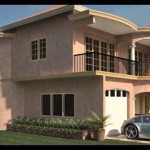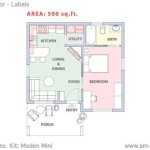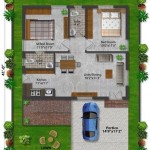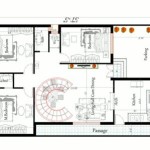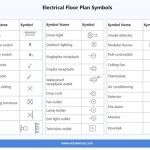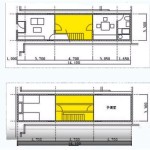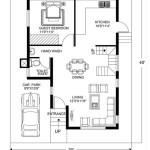15 Lakhs Budget House Plans In Kerala 2024 Mahabhar3
Constructing a house in Kerala within a budget of 15 lakhs in 2024 requires meticulous planning, strategic material selection, and efficient execution. The current economic climate, fluctuating material costs, and labor charges necessitate a pragmatic approach to ensure project feasibility. This article explores various aspects involved in creating a cost-effective house plan, focusing on design considerations, material options, construction techniques, and cost management strategies suitable for the Kerala context, incorporating architectural principles reflective of the Mahabhar3 aesthetic.
The term "Mahabhar3" in this context refers to a design philosophy that draws inspiration from the grandeur and functionality of ancient Indian architecture, particularly elements resonant with the epic Mahabharata. This includes incorporating spacious layouts, courtyards for ventilation, and use of natural materials like laterite stone and wood, albeit adapted to modern construction practices and budget constraints. The aim is to create homes that are both aesthetically pleasing and culturally relevant while remaining within the defined budget.
Several factors influence the overall cost of house construction in Kerala. These include the size of the house, the complexity of the design, the type of materials used, the labor costs in the specific region, and the adherence to building codes and regulations. Therefore, a comprehensive understanding of these factors is crucial for developing a realistic and achievable house plan within the 15 lakhs budget.
Key Considerations for Budget-Friendly House Plans
Successfully building a house within a limited budget demands careful consideration of several key factors that significantly impact the overall cost. These considerations include design simplicity, material selection, construction techniques, and efficient space utilization. Prioritizing these elements will enable the creation of a functional and aesthetically pleasing home without exceeding the allocated budget.
Firstly, design simplicity is paramount. Elaborate architectural designs with intricate detailing often translate to higher material consumption and increased labor costs. Opting for a simple, rectangular or square floor plan minimizes material wastage and simplifies the construction process. The Mahabhar3 influence can be subtly integrated through the use of traditional roofing styles or by incorporating courtyard-like open spaces without adding unnecessary complexity to the overall structure. Avoid complex roof designs, excessive ornamentation, and irregular shapes that can escalate costs.
Secondly, material selection plays a vital role in cost management. Choosing locally available and cost-effective materials is crucial. Instead of expensive imported materials, explore options like laterite stone, concrete blocks, and locally sourced wood. Laterite stone, a readily available material in many parts of Kerala, can be used for foundation and wall construction, providing thermal insulation and a traditional aesthetic. Concrete blocks offer a cost-effective alternative to bricks and can significantly reduce construction time. For roofing, consider using concrete roofing sheets or clay tiles, which are both durable and affordable. Reclaimed wood can be used for doors and windows to reduce costs and add character to the house.
Thirdly, construction techniques can significantly impact the overall cost. Opting for conventional construction methods over advanced or specialized techniques can help reduce labor costs and material wastage. Foundation techniques like rubble trench foundations are a cost-effective alternative to reinforced concrete foundations, especially on stable soil. Wall construction using load-bearing masonry can eliminate the need for expensive structural steel framing. Simplifying the plumbing and electrical layouts can further reduce construction costs. Employing skilled local labor is essential for efficient and cost-effective construction.
Finally, efficient space utilization is critical for maximizing the value of the available budget. Designing a compact and functional layout that minimizes wasted space is essential. Open floor plans can create a sense of spaciousness without increasing the overall square footage. Multi-functional spaces can serve multiple purposes, reducing the need for dedicated rooms. For instance, a living room can double as a dining area or a workspace. Smart storage solutions, such as built-in cabinets and shelves, can optimize space utilization and reduce clutter. Vertical expansion, if permissible and structurally feasible, can provide additional living space without significantly increasing the footprint of the house. The Mahabhar3 inspiration can be seen in the creation of central courtyards or atriums that serve as light wells and ventilation shafts, optimizing space and adding aesthetic value.
Design Elements and Layout Considerations
The design of a 15 lakhs budget house in Kerala should prioritize functionality, affordability, and cultural relevance. Incorporating elements of Mahabhar3 aesthetics, such as open courtyards and natural materials, requires careful planning to ensure that the design remains within the budgetary constraints. The layout should be designed to maximize natural light and ventilation, reducing the reliance on artificial lighting and air conditioning. The size and configuration of rooms should be optimized to meet the needs of the occupants without exceeding the available budget.
Firstly, the layout should be designed to maximize natural light and ventilation. Kerala's climate necessitates effective ventilation to maintain a comfortable indoor environment. Orienting the house to take advantage of prevailing winds and incorporating strategically placed windows and vents can significantly improve air circulation. Open courtyards, a common feature in traditional Kerala architecture and reflective of Mahabhar3 design principles, can serve as light wells and ventilation shafts, providing natural light and fresh air to the interior spaces. The layout should also consider the orientation of the house to minimize direct sunlight exposure during the hottest hours of the day, reducing the need for air conditioning. Overhanging eaves and verandahs can provide shade and protect the walls from direct sunlight.
Secondly, the size and configuration of rooms should be optimized to meet the needs of the occupants without exceeding the available budget. Prioritizing essential spaces, such as bedrooms, living room, and kitchen, is crucial. The size of each room should be determined based on its intended use and the number of occupants. Avoid unnecessary large rooms or specialized spaces that can increase construction costs. Open floor plans can create a sense of spaciousness without increasing the overall square footage. The kitchen layout should be designed for efficiency and functionality, with ample storage space and adequate counter space. The bedrooms should be designed to provide privacy and comfort, with sufficient space for a bed, closet, and other essential furniture.
Thirdly, the design should incorporate cost-effective and locally available materials. Using locally sourced materials reduces transportation costs and supports local industries. Laterite stone, concrete blocks, and locally sourced wood are all viable options for wall construction. Concrete roofing sheets or clay tiles can be used for roofing. Reclaimed wood can be used for doors and windows. The use of sustainable materials, such as bamboo and coconut coir, can further reduce the environmental impact of the construction and lower costs in the long run. The Mahabhar3 influence can be seen in the use of natural materials and traditional construction techniques, albeit adapted to modern practices and budget constraints.
Finally, the design should be aesthetically pleasing and culturally relevant. While adhering to the budget constraints, the design should reflect the traditional architectural styles of Kerala and incorporate elements of Mahabhar3 aesthetics. Simple ornamentation, such as carved wooden panels or decorative tile work, can add character to the house without significantly increasing costs. The color scheme should be chosen to complement the natural surroundings and create a sense of harmony. The overall design should be functional, aesthetically pleasing, and culturally relevant, creating a home that is both comfortable and affordable.
Material Choices and Cost-Effective Construction Techniques
Selecting the right materials and employing cost-effective construction techniques are crucial for building a house within a 15 lakhs budget in Kerala. Material costs often constitute a significant portion of the overall construction expenses, making it essential to explore affordable alternatives without compromising on quality and durability. Similarly, adopting efficient construction techniques can reduce labor costs and minimize material wastage, contributing to overall cost savings.
Firstly, concrete blocks offer a cost-effective alternative to traditional bricks for wall construction. Concrete blocks are readily available, durable, and relatively inexpensive. They also offer good thermal insulation properties, helping to maintain a comfortable indoor temperature. Using concrete blocks can significantly reduce construction time compared to using bricks, as they are larger and easier to handle. The Mahabhar3 aesthetic can be maintained by using laterite stone cladding on the exterior walls to provide a traditional look.
Secondly, laterite stone is another viable option for wall construction, particularly in regions where it is readily available. Laterite stone is a natural material that is known for its thermal insulation properties and durability. It is also relatively inexpensive compared to other building materials. Using laterite stone can give the house a traditional Kerala aesthetic, aligning with the Mahabhar3 design philosophy. However, it is important to ensure that the laterite stone is properly treated to prevent moisture absorption and erosion.
Thirdly, for roofing, concrete roofing sheets or clay tiles are cost-effective and durable options. Concrete roofing sheets are relatively inexpensive and easy to install. They also offer good weather resistance and can last for many years. Clay tiles are a more traditional option that can add aesthetic appeal to the house. They are also durable and provide good thermal insulation. However, clay tiles may be slightly more expensive than concrete roofing sheets.
Fourthly, using reclaimed wood for doors and windows can significantly reduce costs and add character to the house. Reclaimed wood is often available at a fraction of the cost of new wood. It can be used to create unique and aesthetically pleasing doors and windows. However, it is important to ensure that the reclaimed wood is properly treated to prevent rot and insect infestation. The use of reclaimed wood aligns with the sustainable building practices and can add a traditional touch to the house, consistent with the Mahabhar3 design principles.
Fifthly, employing simple foundation techniques, such as rubble trench foundations, can reduce construction costs. Rubble trench foundations are a cost-effective alternative to reinforced concrete foundations, especially on stable soil. They involve digging a trench and filling it with rubble, providing a stable base for the house. This technique reduces the need for expensive concrete and steel reinforcement.
Finally, simplifying the plumbing and electrical layouts can further reduce construction costs. Avoiding complex plumbing and electrical systems can minimize material costs and labor charges. Using energy-efficient lighting and plumbing fixtures can also reduce utility bills in the long run. The Mahabhar3 influence can be seen in the incorporation of rainwater harvesting systems and solar water heaters to promote sustainability and reduce reliance on conventional energy sources.
By carefully considering material choices and employing cost-effective construction techniques, it is possible to build a functional and aesthetically pleasing house within a 15 lakhs budget in Kerala, while also incorporating design elements inspired by the Mahabhar3.

Th Delhi 27 10 Gggg Cm J Nd Nde Follow Us Facebook Thehindu Twitter The Hindu Studocu

Mahindra Xuv300 Mileage Petrol And Diesel

Events Festivals In A Ministry Of Tourism Initiative

Events Festivals In A Ministry Of Tourism Initiative
Why Were No Great Castles Or Palaces Built During The Mahabharata And Ramayan Periods In Shouldn T There Be Some Big Structures Still Surviving Like Pyramids Do Quora

Top 20 Seater Tempo Travellers On In Pollachi Near Me Justdial
Was Nepal Ever A Part Of If So Why Is There No Mention It In History Quora

Top 20 Seater Tempo Travellers On In Pollachi Near Me Justdial
Is Ramayana And Mahabharat Older Than The Indus Valley Civilization Quora
Founded And Established In 1916 By Bharat Ratna Maharshi Dhondo Keshav Karve Hon Ble Chancellor Shri Ramesh Bais Vi

